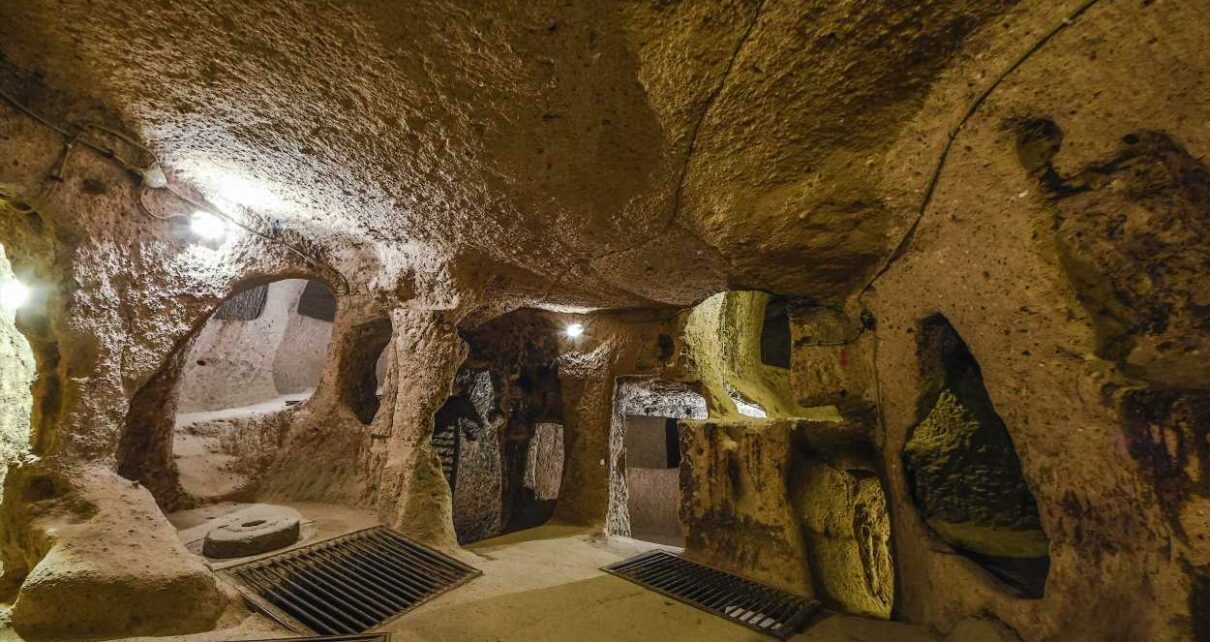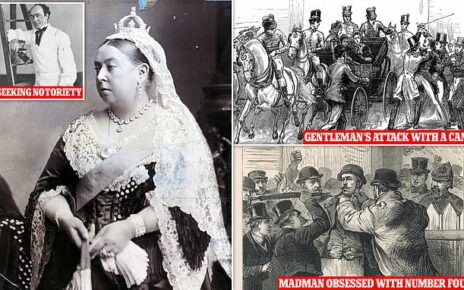A MAN incredibly discovered the world's largest ancient underground city where 20,000 people lived while chasing his chickens.
The unidentified bloke stumbled across the former metropolis while in pursuit of his escaping poultry in his home in Cappadocia, Turkey.




He was chasing the fleeing birds through his basement which was undergoing renovation before they snuck through a hole in the wall.
The homeowner was left with no choice but to knock it down – which led to him finding the ancient city of Elengubu, known today as Derinkuyu.
He found a dark tunnel behind the wall and unknowingly made one of the most incredible accidental historical discoveries for centuries.
It transported him into the subterranean city sitting around 280 feet below the surface with eerie remnants of a lost civilisation.
READ MORE ON INCREDIBLE FINDS

Incredible collection of TWENTY vintage Ferraris found in hurricane-hit barn

I found a rare ring in a muddy field on a walk – now I’ve sold it for £23,000
The man made the extraordinary discovery of what is thought to be the largest excavated underground city in the globe in 1963.
More than 600 private properties that sit on the surface level boast entrances that connect to the underground society.
Around 20,000 people called the city of Elengubu home, with researchers finding 18 levels of tunnels with different amenities.
Guides explained it was littered with rows of homes, a school, a church, cattle stables, storage units and even wineries.
Most read in The Sun

ITV boss reveals what would have happened to Schofield if he’d admitted affair

Huge pop star goes celibate – 23 years after boasting about sex life in hit

Emotional moment Nottingham victims’ weeping families embrace at vigil

Newcastle release EIGHT players and offer shock contract to forgotten man
The secret city was also kitted out with a ventilation system that supplied its residents with a steady stream of fresh air and water.
More than 50 ventilation shafts inviting natural airflow were distributed throughout.
A guide told the BBC: "Life underground was probably very difficult.
"The residents relieved themselves in sealed clay jars, lived by torchlight and disposed of dead bodies in [designated] areas."
Elengubu is estimated to have been built in either the 15th century BCE or seventh century BCE, according to experts at Made In Turkey.
They said: "Despite the disagreement on the architects of the town, there is a general consensus that the underground metropolis served to hide its inhabitants from their enemies.
"This purpose was especially crucial during the Byzantine period when Christians were fleeing from their Roman persecutors.
"When the Christians got to Cappadocia and discovered the city, they expanded and modified its existing structures by adding churches, schools, wineries, and other chambers that suited their needs.
"It is estimated that Derinkuyu could sustain up to 20,000 inhabitants and their animals at a go."
But ancient writings scrawled throughout the buried city dating back to 370 BC suggest it may have existed even earlier.
Boffins believe Elengubu was primarily used to store goods, before it was repurposed as a bunker to take cover from foreign invaders.




Its structure seems to have been created with security in mind – such as the dimly lit, narrow and low hallways.
The design of the passages would force intruders to stoop down to avoid the ceiling while forcing them to enter in a single file line.
Half-ton boulders guarded the doors connecting each level, which could only be moved from the inside.
But they conveniently included a small hole that would allow residents to spear trespassers trapped in the cramped tunnels.
Each level of Elengubu was meticulously engineered for specific uses, with livestock kept close to the surface to reduce the smell of cattle.
Although the architectural masterminds remain a mystery, experts believe the Hittites – a Bronze Age Anatolian people – may be responsible.
A Bertini, an expert in Mediterranean cave dwellings, said they "may have excavated the first few levels in the rock when they came under attack from the Phrygians around 1200 BCE."
The Phrygian invaders are thought to have constructed the majority of the city in the centuries before it changed hands several times.
The Persians, Christians and Cappadocian Greeks also laid claim to Elengubu in the following years.
Experts say the city is likely to have reached its peak population of 20,000 during the 7th-century Islamic raids on the Christian Byzantine Empire.
The city was finally abandoned in 1923 by the Cappadocian Greeks, who fled to Greece after they were trounced in the Greco-Turkish war.
Elengubu is now open to the public for tours, allowing people to marvel at the remnants of the lost societies that inhabited it.
Read more on The Sun

Double Oscar-winning actress Glenda Jackson dies at 87 ‘after brief illness’

EastEnders’ Scott Maslen stuns soap fans as he poses with lookalike son
It even earned a place on the Unesco World Heritage list in 1985.
Excavation work is still ongoing at the site, as well as several of the other small cities found in the wake of Elengubu's discovery.



Source: Read Full Article


